We can remember how Atlas had his head turned
around as if it had been forced by the precession
which had shifted the Sun year to come earlier
and earlier among the stars - and which thus must have
pushed the star Atlas a-head later and later in the Sun
calendar.
... As we can see from the celestial globe above
Atlas has his head in a strange orientation,
presumably in
order to show how the facial side of the year
ends at the empty Crater (Cup) with the black Raven
(Corvus) at the beginning of the opposite (hairy)
side ...
... the bird, being sent with
a cup for water, loitered at a fig-tree till the
fruit became ripe, and then returned to the god
with a water-snake in his claws and a lie in his
mouth, alleging the snake to have been the cause
of the delay. In punishment he was forever fixed
in the sky with the Cup and the Snake; and, we
may infer, doomed to everlasting thirst by the
guardianship of the Hydra over the Cup and its
contents. From all this came other poetical
names for our Corvus - Avis Ficarius, the
Fig Bird; and Emansor, one who stays
beyond his time; and a belief, in early
folk-lore, that this alone among birds did not
carry water to its young ...
A closer look reveals his ear lines up with the
tail of Canis Major
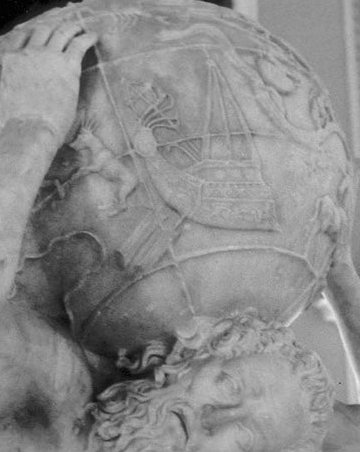
.jpg)
|
OCT 26 (299) |
27 (*220) |
28 |
29 |
30 |
31 |
 |
 |
 |
 |
 |
 |
|
Ga8-16 |
Ga8-17 (220) |
Ga8-18 |
Ga8-19 |
Ga8-20 |
Ga8-21 |
|
ζ
Pavonis (283.4),
λ
Cor. Austr. (283.6),
DOUBLE DOUBLE =
ε
Lyrae
(283.7),
ζ
Lyrae (283.8)
*242.0 = *283.4 - *41.4 |
South Dipper-8 (Unicorn)
Φ
Sagittarii
(284.0),
μ
Cor. Austr. (284.6),
η
Cor. Austr.,
θ
Pavonis (284.8) |
SHELIAK (Tortoise) = β Lyrae,
ν
Lyrae (285.1),
ο Draconis
(285.5). λ
Pavonis (285.7)
ATLAS (27 Tauri) |
χ
Oct. (286.0),
AIN AL RAMI (Eye of the Archer) = ν
Sagittarii
(286.2),
υ Draconis (286.4),
δ
Lyrae (286.3),
κ
Pavonis (286.5),
ALYA (Fat Tail) = θ Serpentis
(286.6)
*245.0 = *286.4 - *41.4 |
ξ Sagittarii (287.1), ω Pavonis
(287.3), ε Aquilae, ε Cor. Austr.,
SULAPHAT (Little Tortoise Shell) = γ
Lyrae (287.4),
λ Lyrae (287.7),
ASCELLA (Armpit) = ζ Sagittarii,
BERED = i Aquilae (Ant.)
(287.9)
*246.0 = *287.4 - *41.4 |
Al Na'ām-18 (Ostriches) /
Uttara Ashadha-21 (Elephant tusk,
small bed)
NUNKI = σ Sagittarii (288.4),
ζ Cor. Austr. (288.5),
MANUBRIUM = ο Sagittarii
(288.8), ζ Aquilae (288.9)
*247.0 = *288.4 - *41.4 |
.jpg)

... I wan't a clean cup, interrupted
the Hatter: let's all move one place
on. He moved as he spoke, and the
Dormouse followed him: the March
Hare moved into the Dormouse's
place, and Alice rather unwillingly
took the place of the March Hare.
The Hatter was the only one who got
any advantage from the change; and
Alice was a good deal worse off than
before, as the March Hare had just
upset the milk-jug into his plate
... |
|
Dec 29 (363) |
30 (*284) |
31 |
Jan 1 |
2 |
3
(368) |
|
°Dec 25 (359) |
26 (*280) |
27 |
28 |
29 |
30 (364) |
|
'Dec 2 (336) |
3
(*257) |
4 |
5 |
6 |
7
(341) |
|
"Nov 18 (312) |
19 (*243) |
20 |
21 |
22 |
23 (327) |
|
... The correspondence between the
winter solstice and the kali'i
rite of the Makahiki is
arrived at as follows: ideally, the
second ceremony of 'breaking the
coconut', when the priests assemble
at the temple to spot the rising of
the Pleiades, coincides with the
full moon (Hua tapu) of the
twelfth lunar month (Welehu). In
the latter eighteenth century, the
Pleiades appear at sunset on 18
November. Ten days later (28
November), the Lono effigy
sets off on its circuit, which lasts
twenty-three days, thus bringing the
god back for the climactic battle
with the king on 21 December, the
solstice (= Hawaiian 16 Makali'i). The
correspondence is 'ideal' and only
rarely achieved, since it depends on
the coincidence of the full moon and
the crepuscular rising of the
Pleiades
... |
|
CLOSE TO THE FULL MOON: |
|
APRIL 27 |
28 (4 * 29½) |
29 |
30 (302 - 183) |
MAY 1 (11 * 11) |
2
(*42) |
|
SIRIUS = α Canis Majoris
(101.2),
ψ5 Aurigae (101.4),
ν Gemini (101.6), ψ6 Aurigae (101.7)
*60.0 = *101.4 - *41.4 |
τ
Puppis (102.2),
ψ7 Aurigae (102.4)
*61.0 = *102.4 - *41.4 |
Mash-mashu-sha-Risū-9 (Twins of the
Shepherd)
θ
Gemini (103.0),
ψ8
Aurigae (103.2),
ALHENA =
γ
Gemini
(103.8),
ψ9
Aurigae (103.9) |
ADARA (Virgins) = ε Canis Majoris
(104.8) |
ω Gemini (105.4),
ALZIRR (Button) =
ξ
Gemini
(105.7),
MULIPHEIN (Oaths) = γ Canis Majoris
(105.8),
MEKBUDA (Contracted) = ζ Gemini
(105.9)
*64.0 = *105.4 - *41.4 |
7h (106.5)
No star listed (106) |
 |
|
June 30 (181) |
July 1 |
2 |
3
(*104) |
4 |
5
(186) |
|
°June 26 |
27 |
28 |
29 (*100) |
30 |
°July 1 (182) |
|
'June 3 |
4 |
5 |
6
(*77) |
7 |
8
(159) |
|
"May 20 |
21 |
22 |
23 (*63) |
24 |
25 (145) |
North of the equator the facial side - oriented
towards the bright (broad) sun light - came when south of the
equator it became winter (the 'hairy' side of the
year).
... it is told that he
[Gilgamesh] lives in splendor and dissoluteness,
and makes a nuisance of himself until the gods
bring relief to his people by rearing a human
being, either twin or counterpart,³ who can
stand up to him. It is Enkidu, the man of the
Wilds, a kind of wolf-child as simple as the
beasts he plays with, a happy son of nature,
hairy all over, grown to enormous strength
...
³ Actually, the goddess Aruru
makes him 'in the likeness of Anu', literally 'a
zikru of Anu she conceived in her heart'.
But Enkidu is also said to look like Gilgamesh
'to a hair' ...
Therefore the corresponding head as viewed from
Easter Island ought to be turned in the opposite
direction - as if in a mirror.
... But the time of his
predestined defeat by the dark brother,
Tezcatlipoca, was ever
approaching, and, knowing perfectly the rhythm
of his own destiny, Quetzalcoatl
would make no move to stay it.
Tezcatlipoca, therefore,
said to his attendants, 'We shall give him a
drink to dull his reason and show him his own
face in a mirror; then, surely, he will be
lost'. And he said to the servants of the good
king, 'Go tell your master that I have come to
show him his own flesh!' But when the message
was brought to Quetzalcoatl,
the aging monarch said, 'What does he call my
own flesh? Go and ask!'
And when the other was
admitted to his presence: 'What is this, my
flesh, that you would show me?'
Tezcatlipoca answered,
'My Lord and Priest, look now at your flesh;
know yourself; see yourself as you are seen by
others!' And he presented the mirror. Whereupon,
seeing his own face in that mirror,
Quetzalcoatl immediately
cried out, 'How is it possible that my subjects
should look upon me without fright? Well might
they flee from before me. For how can a man
remain among them when he is filled as I am with
foul sores, his old face wrinkled and of an
aspect so loathsome? I shall be seen no more, I
shall no longer terrify my people'.
Presented the drink to quaff,
he refused it, saying that he was ill; but urged
to taste it from the tip of his finger, he did
so and was immediately overpowered by its magic.
He lifted the bowl and was drunk. He sent for
Quetzalpetlatl,
his sister, who dwelt on the Mountain
Nonoalco. She came, and
her brother gave her the bowl, so that she too
was drunk. And with all reason forgotten, the
two that night neither said prayers nor went to
the bath, but sank asleep together on the floor
...
However, also south
of the equator the direction (north)east was where the Sun rose and
where at the horizon in the (south)west (Toga) he went down
again.
When the First Point of Aries rose with the Sun
in the east
the
Full Moon would have been in the west at the
right ascension line of black Raven.
|
no glyph |
koia |
ki
te hoea |
ki
te henua |
te
rima te hau tea |
haga i te mea ke |
ki
te henua - tagata honui |
|
Ko. 1.
Article (ko te); preposition:
with (see grammar); prefix of
personal pronouns: koau, I;
kokoe, you (singular);
koîa, he, she, it; kokorua,
you (plural); ko tagi, koîa,
he with his weeping. 2. Article
which precedes proper nouns, often
also used with place names: Ko
Tori, Ko Hotu Matu'a, Ko Pú.
Koîa,
exact: tita'a koîa, exact
demarcation. Seems to be the
personal pronoun koîa -
applied in the meaning of: thus it
is, here it is precisely.
Vanaga. 1. Negative; e ko,
not, except; e ko ora,
incurable; ina ko, not;
ina ko tikea, unseen; ina e
ko, not; ina e ko mou,
incessant. 2. A particle used before
nouns and pronouns; ko vau,
I; ko te, this; ko mea
tera, this; ati ko peka,
to avenge, ko mua, first, at
first, formerly. 3. There, yonder. P
Mgv.: ko, over there, yonder.
Ta.: ó, there, here.
Churchill.
... Before the beginning of a
new 'year' (= halfyear) it is not yet determined
what will come. According to the Babylonian view
there was a chamber of hazard where the sky roof
meets earth: ... Als solch ein Ort (resp.
ein Gemach) im Osten des apsū [water
below the earth] und im Osten der Erde an der
Grenze zwischen dem sichtbaren und unsichtbaren
Reiche hat der Duazag eine ganz besondere
Bedeutung im Glauben der Babylonier. Er ist ...
'der Ort der Geschicke', der ki
nam-tar-tar-ini = ašar šimātum. Ein
Solcher konnte nur im Osten liegen. Denn die
Sonne geht im Osten auf. Die Ostsonne ist
Marduk. Darum bringt auch Marduk die
Geschicke aus der Behausung seines Vaters Ía,
dem Urwasser, hervor ...
Hoe. Hoe 1.
Paddle. Mgv.: hoe, ohe,
id. Mq., Ta.: hoe, id. 2. To
wheeze with fatigue (oeoe 2).
Arero oeoe, to stammer, to
stutter; Mgv. oe, to make a
whistling sound in breathing; ohe,
a cry from a person out of breath.
Mq.: oe, to wheeze with
fatigue. 3. Blade, knife; hoe
hakaiu, clasp-knife,
jack-knife; hoe hakanemu,
clasp-knife; hoe pikopiko,
pruning knife. 4. Ta.: oheohe,
a plant. Ma.: kohekohe, id.
Churchill.T. Paddle. E hoe te
heiva = 'and to paddle (was
their) pleasure'. Henry. Hoea,
instrument for tattooing. Barthel.
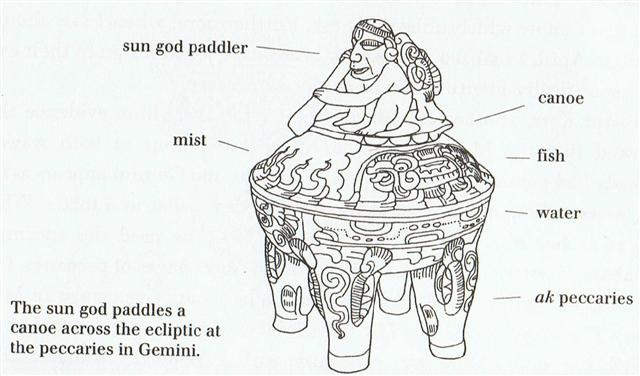 |
 |
 |
 |
 |
 |
 |
 |
|
Ca1-1 |
Ca1-2 |
Ca1-3 |
Ca1-4 |
Ca1-5 |
Ca1-6 |
|
CLOSE TO THE SUN: |
|
Sept 20 (263) |
21 |
Equinox |
23 (181 + 85) |
24 |
25 (84 +
184) |
26 |
|
ALCHITA
= α Corvi,
MA WEI (Tail of the Horse)
= δ Centauri
(183.1),
MINKAR = ε Corvi
(183.7), ρ Centauri (183.9) |
PÁLIDA (Pale) = δ Crucis
(184.6),
MEGREZ (Root of the Tail) = δ Ursae
Majoris
(184.9) |
Hasta-13 (Hand) /
Chariot-28 (Worm)
GIENAH
(Wing) = γ Corvi
(185.1),
ε
Muscae (185.2),
ζ
Crucis (185.4),
ZANIAH
(Corner) = η Virginis
(185.9)
*144.0 = *185.4 - *41.4 |
CHANG SHA
(Long
Sand-bank) = ζ Corvi
(186.3) |
INTROMETIDA
(Inserted) = ε
Crucis
(187.4),
ACRUX = α
Crucis
(187.5)
*146.0 = *187.4 - *41.4 |
γ
Com. Berenicis (188.0),
σ
Centauri (188.1),
ALGORAB = δ Corvi
(188.5),
GACRUX = γ Crucis
(188.7) |
γ
Muscae (189.0),
AVIS SATYRA (Bird of the Satyrs) = η
Corvi
(189.3),
ASTERION (Starry) = β Canum Ven.
(189.5),
KRAZ = β Corvi,
κ Draconis (189.7) |

... Raven gazed up and down the
beach. It was pretty, but lifeless.
There was no one about to upset, or
play tricks upon. Raven sighed. He
crossed his wings behind him and
strutted up and down the sand, his
shiny head cocked, his sharp eyes
and ears alert for any unusual sight
or sound. The mountains and the sea,
the sky now ablaze with the sun by
day and the moon and stars he had
placed there, it was all pretty, but
lifeless. Finally Raven cried out to
the empty sky with a loud
exasperated cry. And before the
echoes of his cry faded from the
shore, he heard a muffled squeak. He
looked up and down the beach for its
source and saw nothing. He strutted
back and and forth, once, twice,
three times and still saw nothing.
Then he spied a flash of white in
the sand. There, half buried in the
sand was a giant clamshell. As his
shadow fell upon it, he heard
another muffled squeak. Peering down
into the opening between the halves
of the shell, he saw it was full of
tiny creatures, cowering in fear at
his shadow ... |
|
CLOSE TO THE FULL MOON: |
|
March 21 (80)
Al Fargh al Thāni-25 (Rear Spout)
0h (365.25)
CAPH (Hand) = β Cassiopeiae,
SIRRAH (Navel of the Horse)
= α
Andromedae
(0.5),
ε
Phoenicis,
γ³
Oct.
(0.8) |
22
Uttara Bhādrapadā-27 (2nd of the
Blessed Feet) /
Wall-14 (Porcupine)
ο Oct. (1.3),
ALGENIB PEGASI
= γ Pegasi
(1.8) |
23
χ Pegasi (2.1), θ Andromedae (2.7) |
24
σ Andromedae (3.0), ι Ceti (3.3), ζ
Tucanae (3.5), ρ Andromedae, π
Tucanae (3.7) |
Julian
equinox
No star listed (4) |
26 (80 + 5)
ANKAA
= α Phoenicis,
κ Phoenicis (5.0)
ALPHARD
(α Hydrae)
|
27
λ Phoenicis (6.3),
β Tucanae (6.4)
*6.4 - *41.4 + *366.0 = *331
=
*148.0 + 183.0 |
|
... Nut, whom the
Greeks sometimes identified with
Rhea, was goddess of the sky, but it
was debatable if in historical times
she was the object of a genuine
cult. She was Geb's twin sister and,
it was said, married him secretly
and against the will of Ra. Angered,
Ra had the couple brutally separated
by Shu and afterwards decreed that
Nut could not bear a child in any
given month of any year. Thoth,
Plutarch tells us, happily had pity
on her. Playing draughts with the
Moon, he won in the course of
several games a seventy-second part
of the Moon's light with which he
composed five new days. As these
five intercalated days did not
belong to the official Egyptian
calendar of three hundred and sixty
days, Nut was thus able to give
birth successively to five children:
Osiris, Haroeris (Horus), Set, Isis
and Nepthys ... |

... The players all played at once,
without waiting for turns,
quarreling all the while, and
fighting for the hedge-hogs; and in
a very short time the Queen was in a
furious passion, and went
stamping about, and shouting 'Off
with his head!' or 'Off with her
head!' about once in a minute. Alice
began to feel very uneasy: to be
sure, she had not as yet had any
dispute with the Queen, but she knew
that it might happen any minute,
'and then', thought she, 'what would
become of me?' They're dreadfully
fond of beheading
people
here: the great wonder is, that
there's any one left alive! ... |
The form of the hole delineated inside glyph
number 420 (counted from the beginning of side
a) in the B text (Bb4-17) is not circular, which
makes for the impression of that of an ear:
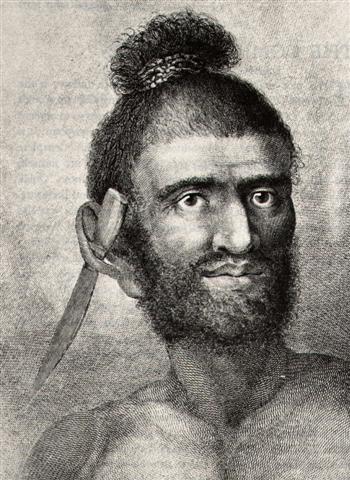
 |
 |
 |
 |
|
Bb3-33 (111) |
Bb3-34 |
Bb3-35 → 256 + 79 |
Bb3-36 → 256 + 80 |
|
Sept 11 (254 = 270 - 16) |
12 (355 - 100) |
13 (4 * 64) |
14 (257 = 273 - 16) |
| mai tae tu |
ki te hipu |
gutu
huri |
e toa maro |
|
Gutu. 1. Lips, mouth, beak, snout
(goutu); gutu ahu, swollen lip; gutu
hiti, thick lip; gutu mokomoko, pointed lip;
gutu no, vain words; gutu pakapaka,
scabbed lips; gutu raro, lower lip; gutu ruga,
upper lip. Gutugutu, snout. P Pau.: gutu,
lip, beak, bill. Mgv.: gutu, the chin, the mouth
of a fish. Mq.: nutu, beak, snout. Ta.: utu,
lip, mouth, beak, snout. Gutupiri, attentively.
Gututae, attentively; gututae mekenu, a
small mouth. Gututika, tattoing on the lips. 2.
Pau.: Gutuafare, to save, to economize. Ta.:
utuafare, family, residence. 3. Pau.: Guturoa,
to grimace, to pout. Mgv.: guturoa, to grimace.
Churchill.
Huri. 1. To turn (vt.), to
overthrow, to knock down: huri moai, the
overthrowing of the statues from their ahus
during the period of decadence on the island. 2. To
pour a liquid from a container: ka huri mai te vai,
pour me some water. 3. To end a lament, a
mourning: he huri i te tagi, ina ekó tagi hakaou,
with this the mourning (for the deceased) is over, there
shall be no more crying. 4. New shoot of banana:
huri maîka. Vanaga. 1. Stem. P Mgv.: huri,
a banana shoot. Mq.: hui, shoot, scion. 2. To
turn over, to be turned over onto another side, to bend,
to lean, to warp; huri ke, to change, to decant;
tae huri ke, invariable; huri ke tahaga no mai,
to change as the wind; tae huri, immovable; e
ko huri ke, infallible; huhuri, rolling;
hakahuri, to turn over; hakahuri ke, to
divine. P Pau.: huri, to turn. Mgv.: huri,
uri, to turn on one side, to roll, to turn upside
down, to reverse. Mq.: hui, to turn, to reverse.
3. To throw, to shoot. 4. To water, to wet. 5. To hollow
out. Hurihuri: 1. Wrath, anger; kokoma
hurihuri, animosity, spite, wrath, fury, hate,
enmity, irritable, quick tempered, to feel offended, to
resent, to pester; kokoma hurihuri ke, to be in a
rage. 2. (huri 4) hurihuri titi, to fill
up. 3. To polish. 4. (uriuri). Hurikea, to
transfigure, to transform. Churchill. Mq. huri,
resemblance. Sa.: foliga, to resemble. Churchill. |
 |
 |
 |
 |
|
Bb3-37 (115 → April
25) |
Bb3-38 |
Bb3-39 → 78 + 39 |
Bb3-40 (118) |
|
Sept
15 |
16 |
17 (260) |
18
(118 + 11 * 13) |
| kua vero
hia raua -
ki to maro |
ma to
kava - kua huri te
hatu |
ki te
henua |
ma te
maitaki |
|
... On the twenty-fifth day of the
first month (Vaitu Nui), Ira and Makoi
set sail; on the first day of June ('Maro'), the
bow of Ira's canoe appeared on the distant
horizon, came closer and closer on its course, and
sailed along, and finally (one) could see the (new home)
land ... [E:17]
... Metoro's hia ought to have been a suggestion
to Bishop Jaussen to count: e.g. 179 (June 28) - 84
(Julian equinox) = 175 (ºJune 24) - 80 (Gregorian
equinox) = *95 (Canopus) ...
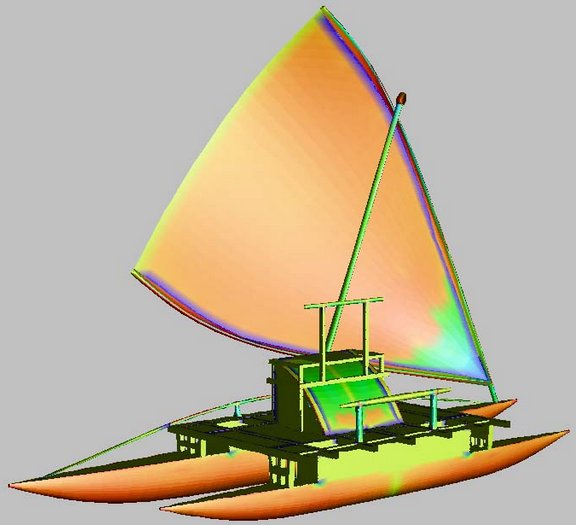 |
 |
 |
 |
 |
|
Bb3-41 (119 → 80 +
39) |
Bb3-42 |
Bb3-43 (11 * 11) |
Bb4-1 |
|
Sept
19 |
20 (263) |
21 (584 - 320) |
Equinox |
| mai tae vere
hia -
ki te pito o te henua |
e
nuku hoi |
kua here te
toa - i ruga o to
maro |
Kua huki - ko te
maro |
|
Here. 1. To catch eels in a snare
of sliding knots; pole used in this manner of fishing,
with a perforation for the line. 2. To tie, to fasten,
to lash; rasp made of a piece of obsidian with one rough
side; cable, tie; figuratively: pact, treatise. Vanaga.
1. To lash, to belay, to knot the end of a cord, to
lace, to tie, to fasten, to knot; to catch in a noose,
to strangle, to garrote; here pepe, to saddle;
moa herea, a trussed fowl; hehere, collar,
necklet; herega, bond, ligament; heregao,
scarf, cravat. 2. Hakahere. To buy, to sell, to
barter, to part with, to pay for, to do business, to
compensate, to owe, to disburse, to expiate, to
indemnify, to rent out, to hire, to traffic, to bargain,
to bribe; merchant, trader, business, revenge; tagata
hakahere, merchant, trader; hakahere ki te ika,
to avenge; hakaherega, ransom, redemption;
hakahererua, to exchange, to avenge. 3. Here ei
hoiho, incense. Churchill. Hereke, festering
wound, cracked skin. Barthel 2. |
 |
 |
 |
 |
|
Bb4-2 (123) |
Bb4-3 |
Bb4-4 |
Bb4-5 |
|
Sept
23 (266) |
24 |
25
(268) |
26 |
| ko te vere - a uta |
ko te vere - i te
ragi - kua here to
maro |
i te maitaki o to
maro |
i te maharoga i to
maro |
|
Vere.
1. Beard, moustache (vede G); vere
gutu, moustache; verevere, shaggy, hairy,
tow, oakum. Mgv.: veri, bristly, shaggy, chafed
(of a cord long in use). Mq.: veevee, tentacles.
Ta.: verevere, eyelash. 2. To weed (ka-veri-mai,
pick, cut-grass T); verevere, to weed. P Mgv.:
vere, to weed. Mq.: veéveé, vavee, id.
3. Verega, fruitful, valuable; verega kore,
unfruitful, valueless, contemptible, vain, futile,
frivolous; tae verega, insignificant, valueless;
mataku verega kore, scruple. Mgv.: verega,
a design put into execution; one who is apte, useful,
having a knowledge how to do things. 4. Ta.: verevere,
pudenda muliebria. Ma.: werewere, id. (labia
minora). Churchill. Sa.: apungaleveleve,
apongaleveleve, a spider, a web. To.: kaleveleve,
a large spider. Fu.: kaleveleve, a spider, a web.
Niuē: kaleveleve,
a cobweb. Nukuoro: halaneveneve,
a spider. Uvea: kaleveleve,
a spider. Mgv.: pungaverevere,
a spider. Pau.: pungaverevere,
cloth. Mg.: pungaverevere,
a cobweb. Ta.: puaverevere,
id. Mao.: pungawerewere,
puawerewere,
puwerewere, a
spider. Ha.: punawelewele,
a spider, a web. Mq.: pukaveevee,
punaveevee,
id. Vi.: lawa,
a fishing net; viritālawalawa,
a cobweb; butalawalawa,
a spider. Churchill 2.
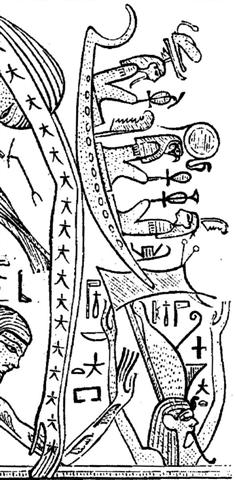
Maharo. To admire something, to
be astonished, to watch something with delight,
interest, or amazement. Maharoga, object of
admiration. Vanaga. To glorify, to flatter, to admire,
to amaze, to astonish, to enchant, to astound; eulogy,
boasting; maharo hia ia a, to vaunt;
maharohaga, flattery. P Pau.: maharo, to
wonder at, to marvel. Mgv.: maharo, to praise, to
vaunt, commendation. Mq.: mahaó, to praise,
admirable, astonishing. Churchill.

 |
 |

8 |

10 |

10 |
|
Bb4-6 |
Bb4-7
(128) |
Bb4-8 |
Bb4-9 |
|
Sept
27 (270) |
28
(181 + 90) |
29
(455 - 183) |
30
(273 = 3 * 91) |
|
JULY 25 (206) |
26 |
27
(*128) |
28 |
| o te
henua |
kua
hakaturou |
koia
ra e hakaturou e |
kua
oho mai i te maro |
|
Turou.
Mgv.: a great sacriledge or
blasphemy. Ta.: turou, a curse,
to blaspheme. Churchill.
... She came, and her brother gave her
the bowl, so that she too was drunk. And
with all reason forgotten, the two that
night neither said prayers nor went to
the bath, but sank asleep together on
the floor.
And in the morning
Quetzalcoatl
said, in shame, 'I have sinned; the
stain of my name cannot be erased. I am
not fit to rule this people. Let them
build a habitation for me deep under the
ground; let them bury my bright
treasures in the earth; let them throw
the glowing gold and shining stones into
the Precious Waters where I take my
nightly bath. And all this was done. The
king remained four days in his
underground tomb, and when he came forth
he wept and told his people that the
time had come for his departure to the
Red Land, the Dark Land, the Land of
Fire ... |
|
α Muscae (190.2), τ Centauri (190.5), χ Virginis (190.7)
ALDERAMIN (α Cephei) |
Al Áwwā'-11 (The Barker) /
Shur-mahrū-shirū-18 (Front or West Shur)
SOMBRERO GALAXY = M104 Virginis
(191.1),
ρ
Virginis (191.4), PORRIMA =
γ
Virginis,
γ
Centauri (191.5)
*150.0 = *191.4 - *41.4 |
ι Crucis (192.2), β Muscae (192.5),
MIMOSA = β Crucis
(192.9) |
No star listed (193) |
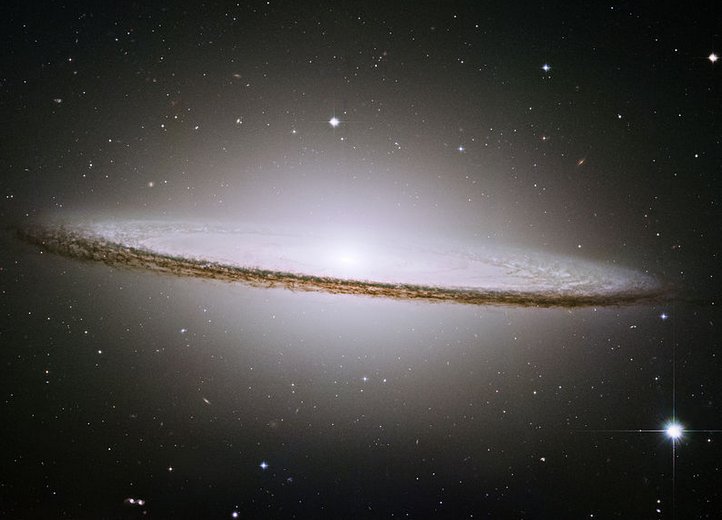 |
|
CLOSE TO THE FULL MOON: |
|
March
29 (88) |
30 |
31
(455) |
April
1 (91) |
|
JAN
24 |
25 |
26 (=
455 - 64 - 365) |
27
(392) |
|
... Odysseus and his
fleet were now in a mythic realm of
difficult trials and passages, of which
the first was to be the Land of the
Cyclopes, 'neither nigh at hand, nor yet
afar off', where the one-eyed giant
Polyphemus, son of the god Poseidon
(who, as we know, was the lord of tides
and of the Two Queens, and the lord,
furthermore, of Medusa), dwelt with his
flocks in a cave. 'Yes, for he was a
monstrous thing and fashioned
marvelously, nor was he like to any man
that lives by bread, but like a wooded
peak of the towering hills, which stands
out apart and alone from others.'
Odysseus, choosing twelve men, the best
of the company, left his ships at shore
and sallied to the vast cave. It was
found stocked abundantly with cheeses,
flocks of lambs and kids penned apart,
milk pails, bowls of whey; and when the
company had entered and was sitting to
wait, expecting hospitality, the owner
came in, shepherding his flocks. He bore
a grievous weight of dry wood, which he
cast down with a din inside the cave, so
that in fear all fled to hide. Lifting
a huge doorstone, such as two and
twenty good four-wheeled wains could not
have raised from the ground, he set
this against the mouth of the cave, sat
down, milked his ewes and goats, and
beneath each placed her young, after
which he kindled a fire and spied his
guests ... |
|
ε Andromedae (8.2),
DELTA = δ Andromedae (8.4), SCHEDIR
(Breast) = α Cassiopeiae (8.6), ζ Andromedae, μ Phoenicis (8.9)
*332.0 = *8.4 - *41.4 |
ξ
Phoenicis (9.0),
ρ
Tucanae (9.1),
DENEB KAITOS (Tail of the Sea Beast) =
β
Ceti,
η
Phoenicis (9.4), AL NITHĀM (String of
Pearls) =
φ¹
Ceti
(9.6)
*333.0 = *9.4 - *41.4 |
ACHIRD (Woman with Luminous Rays) =
η
Cassiopeiae
(10.7) |
Legs-15 (Wolf)
ν
Andromedae (11.0),
φ²
Ceti (11.1),
ρ
Phoenicis (11.2),
η
Andromedae (11.4)
*335.0 = *11.4 - *41.4 |
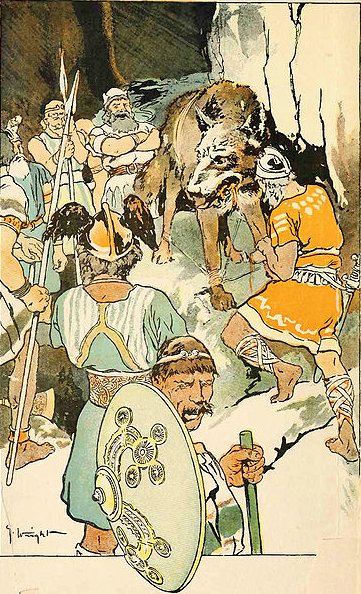 |
 |
 |
 |
 |
|
Bb4-10 |
Bb4-11 |
Bb4-12 (133) |
Bb4-13 → 14 * 29½ |
|
Oct 1 |
2 |
3
(459 - 183) |
4 (277) |
| i te
maitaki |
e
tagata - huri hatu |
to ihe |
ko te
tagata kua kai |
|
κ
Crucis (194.4),
ψ
Virginis (194.5),
μ
Crucis,
λ
Crucis (194.6),
ALIOTH (Fat Tail) =
ε
Ursae Majoris,
ι
Oct.
(194.8)
*153.0 = *194.4 - *41.4 |
MINELAUVA = δ Virginis
(195.1),
COR CAROLI = α Canum Ven.
(195.3) |
δ
Muscae (196.5),
VINDEMIATRIX (Grape Gatherer) = ε
Virginis
(196.8) |
13h (197.8)
ξ¹ Centauri (197.1), ξ² Centauri (197.9 |
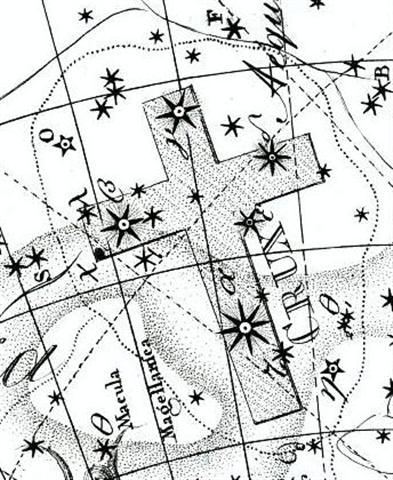 |
|
CLOSE TO THE FULL MOON: |
|
April 2 |
3
(*378 → Saturn) |
4 (365 + 94) |
5 (460) |
|
CIH (Whip) = γ Cassiopeiae, λ Tucanae (12.4),
φ³ Ceti (12.6), μ Andromedae (12.8)
*336.0 = *12.4 - *41.4 |
φ4 Ceti (13.2) |
No
star listed (14) |
1h (15.2)
β Phoenicis (15.1), υ Phoenicis, ι
Tucanae (15.6), η Ceti, ζ Phoenicis
(15.7) |
|
...
At the beginning of 44 B.C. - when
Ceasar was still alive - the Senate
decided to raise statues of him in all
the temples and to sacrifice to him on
his birthday in the month Quintilis,
which in honour of him was renamed July.
He was raised to the status of a god
(among the other gods of the state)
under the name Jupiter Julius. Marcus
Antonius, who this year was consul
together with Caesar, became high priest
and responsible for the ceremonies. In
the middle of February, at the time of
the old feast of Lupercalia [Lupus
= Wolf], he ran around naked and whipped
the Roman ladies with thongs made from
goat-skin [februa], in order to
promote their fertility ...
... From day 45 (= 31 + 14) in Roman
times to the Whip star rising heliacally
in April 2 (92) there were 47 days, but
the rays from the rising Sun would make
the star invisible for another 15 days.
92 + 15 = 107 (= 472 - 365 = 1½ * 314 -
364) ... |
|
JAN
28 (= 92 - 64) |
29
(*314) |
30 |
31
(396) |
|
μ²,
μ¹
Oct. (313.2),
DENEB CYGNI (Tail of the Swan) =
α
Cygni
(313.5),
β
Pavonis (313.6),
δ
Delphini (313.8) |
Al Sa’d al Bula'-21 (Good Fortune of the
Swallower) /
Dhanishta-24 (Most Famous) /
Girl-10 (Bat)
YUE (Battle-Axe) =
ψ
Capricorni
(314.3),
GIENAH CYGNI =
ε
Cygni,
η
Cephei (314.5),
γ
Delphini (314.6),
σ
Pavonis (314.7),
ALBALI =
ε
Aquarii
(314.8)
BETELGEUZE (α Orionis) |
BATEN ALGIEDI (Belly of the Goat) =
ω
Capricorni
(315.8) |
μ Aquarii (316.0) |
 |
 |
 |
 |
 |
 |
|
→ BHARANI |
Bb4-15 (136) |
Bb4-16 |
Bb4-17 |
Bb4-18 |
Bb4-19 (140) |
|
Oct 5 |
6 |
7 (280) |
8 (464 - 183) |
9 |
10 (283) |
|
...
Curiously the spine of a human consists of 7
neck bones, 12 dorsal bones and 5 tail bones, 24
vertebra in all. Certainly this was noticed very
early and thereafter incorporated into the
myths, wherever suitable. 5 tail bones (although
no tail was visible outside the human body) must
correspond to the 5 extra days at the end of the
year (not visible in the calendar) ... |
|
ki to vae oho |
ma te tara huki |
a rere te manu |
ki to vaha kai |
ma te hoko huki - kua rere te
manu |
vae oho |
|
APAMI-ATSA (Child of Waters) = θ
Virginis,
ψ
Hydrae (198.5),
DIADEM = α Com. Ber.
(198.9) |
AL DAFĪRAH (Tuft) =
β
Com. Ber.
(199.4)
*158.0 = *199.4 - *41.4 |
σ Virginis (200.4)
*159.0 = *200.4 - *41.4 |
γ
Hydrae (201.0),
ι
Centauri (201.4)
*160.0 = *201.4 - *41.4 |
Al Simāk-12 (Lofty) /
Chitra-14 (Bright One) /
Horn-1 (Crocodile) /
Sa-Sha-Shirū-20
(Virgin's Girdle) /
ANA-ROTO-3 (Middle pillar)
MIZAR = ζ Ursae Majoris (202.4),
SPICA = α Virginis, ALCOR = 80
Ursae Majoris
(202.7)
SADALMELIK (α Aquarii)
*161.0 = *202.4 - *41.4 |
71 VIRGINIS
(203.6) |
|
... Proclus
informs us that the fox star
nibbles continuously at the
thong of the yoke which holds
together heaven and earth;
German folklore adds that when
the fox succeeds, the world will
come to its end. This fox star
is no other than Alcor,
the small star g near zeta Ursae
Majoris (in India Arundati,
the common wife of the Seven
Rishis, alpha-eta Ursae ...
 |
|
CLOSE TO THE FULL MOON: |
|
April 6 (96) |
7 (*382) |
8 (363 + 100) |
9 (99 = 464) |
10 (465) |
11 (101) |
|
Al Batn Al Hūt-26 (Belly of the
Fish) /
Revati-28 (Prosperous) /
1-iku (Field Measure)
MIRACH (Girdle) =
β
Andromedae, KEUN MAN MUN (Camp's
South Gate) =
φ
Andromedae (16.0), ANUNITUM =
τ
Piscium (16.5), REVATI
(Abundant) =
ζ
Piscium (16.9)
REGULUS
(α Leonis) |
ν Phoenicis (17.4), κ Tucanae (17.6)
*341.0 = *382.4 - *41.4
= *158.0 + *183.0 |
No star listed (18) |
ADHIL (Garment's Train) = ξ
Andromedae
(19.3),
θ
Ceti (19.7) |
KSORA (Knee) =
δ
Cassiopeiae
(20.1),
ω
Andromedae (20.6),
γ
Phoenicis (20.8) |
δ Phoenicis (21.5) |
|
... Though Andromeda has its roots most
firmly in the Greek tradition, a female
figure in Andromeda's place appeared in
Babylonian astronomy. The stars that
make up Pisces and the middle portion of
modern Andromeda formed a constellation
representing a fertility goddess,
sometimes named as Anunitum or
the Lady of the Heavens ...
 |
|
FEBR
1 (397) |
2 |
3 |
4 (400) |
5 |
6 |
|
ε Equulei (317.8) |
No star listed (318) |
21h (319.6)
ARMUS =
η
Capricorni
(319.0),
DORSUM =
θ
Capricorni
(319.3),
TSOO = 24 Capricorni
(319.7) |
DRAMASA =
σ
Oct.,
χ
Capricorni (320.0),
ν
Aquarii (320.3),
γ
Equulei (320.6),
ο
Pavonis (320.8) |
α Oct. (321.5),
δ
Equulei (321.7),
φ
Capricorni (321.8) |
KITALPHA (Part of a Horse) =
α
Equulei
(322.0),
ALDERAMIN (The Right Arm) =
α
Cephei
(322.9) |
|
MARCH 11 |
(*318 = *82 - *64) |
3-13 |
π (→ 400 = *320) |
(465 - 64 = 401) |
16 (101 - 64 = 75) |
The same goes for glyph number 228 in the G
text,
... The form of the hole delineated inside glyph
number 420 in the B text is not circular, which
makes for the impression of that of an ear ...
where the position has been coordinated
with MARCH 19 (78), i.e. when the Sun rose
together with the Egg in the Golden Age of the
Bull.
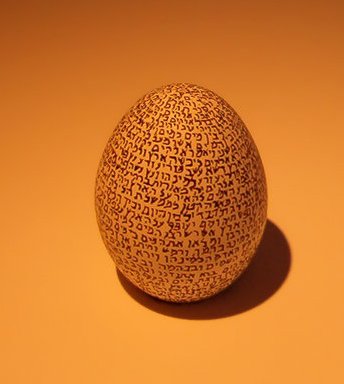
|
MARCH 17 |
18 |
19 (78 = 142
- 64) |
20 (444 =
365 + 79) |
0h (*365) |
 |
 |
 |
 |
 |
|
Gb5-8 |
Gb5-9 |
Gb5-10 (363) |
Gb5-11 (229
+ 135) |
Gb5-12 (365) |
|
4h (60.9)
JĪSHUĬ =
λ
Persei
(60.7)
COR CAROLI (α
Canum Ven.) |
υ Persei
(61.2) |
BEID (Egg)
=
ο¹
Eridani
(62.2),
μ
Persei
(62.8)
VINDEMIATRIX
( ε
Virginis) |
Al Dabarān-2
(The
Follower)
HYADUM I
= γ
Tauri
(63.4)
*22.0 =
*63.4 -
*41.4 |
HYADUM II
= δ¹ Tauri
(64.2) |
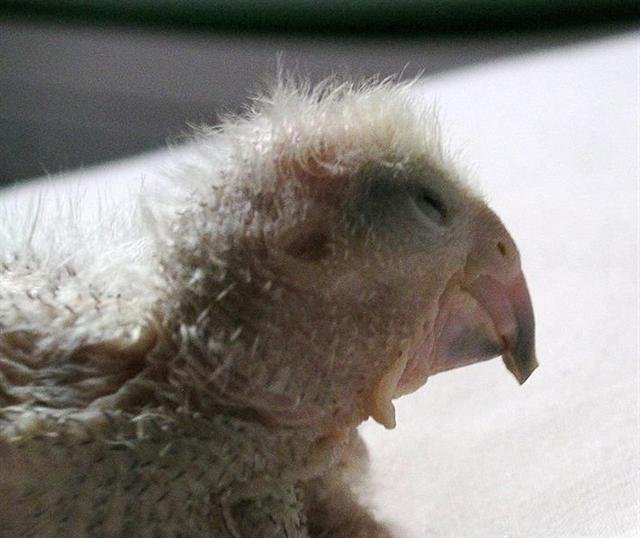 |
|
May 20 |
21 |
22 (142) |
23 (*428) |
24 (509) |
|
... Should
we try to
count from
the
beginning of
side b, then
the position
of Ba1-3
will become
day number
506 + 3 =
509, which
'happens to
be' equal to
365 + 12 *
12 ... |
|
°May 16
(136) |
17 |
18 |
19 (*424) |
20 (*60) |
|
'April 23 |
24 (114) |
25 (*400) |
26 (*36) |
27 |
|
"April 9
(99) |
10 (465) |
11 |
12 (*22) |
13 |
78 (Gb5-10, MARCH 19) - 5 = 73 (Bb4-17,
MARCH 14).
... Nut, whom the
Greeks sometimes identified with
Rhea, was goddess of the sky, but it
was debatable if in historical times
she was the object of a genuine
cult. She was Geb's twin sister and,
it was said, married him secretly
and against the will of Ra. Angered,
Ra had the couple brutally separated
by Shu and afterwards decreed that
Nut could not bear a child in any
given month of any year. Thoth,
Plutarch tells us, happily had pity
on her. Playing draughts with the
Moon, he won in the course of
several games a seventy-second part
of the Moon's light with which he
composed five new days. As these
five intercalated days did not
belong to the official Egyptian
calendar of three hundred and sixty
days, Nut was thus able to give
birth successively to five children:
Osiris, Haroeris (Horus), Set, Isis
and Nepthys ...
Here we must
perceive that 'the
ear' at Gb5-10 not
only would have
indicated MARCH 19
(78) but also the
date 443 (= 78 +
365) at the final of
the previous year.
15 * 29½ = 442½.
Here was the culmination
of the Grape
Gatherer.

Similarly MARCH 14
(3-14 → π) at 'the
ear' in Bb4-17 would
also represent day
73 + 365 = 438 (= 6
* 73). According to
my assumed epoch for
rongorongo this
would be at the place
of Adhil (*19 = 99,
ξ Andromedae)
when close to the Full Moon.
464 - 365 = 99, viz.
April 9 (99).


... Hamiora Pio
once spoke as
follows to the
writer: 'Friend! Let
me tell of the
offspring of
Tangaroa-akiukiu,
whose two daughters
were Hine-raumati
(the Summer Maid -
personified form of
summer) and
Hine-takurua
(the Winter Maid -
personification of
winter), both of
whom where taken to
wife by the sun ...
Now, these women had
different homes.
Hine-takurua
lived with her elder
Tangaroa (a
sea being - origin
and personified form
of fish). Her
labours were
connected with
Tangaroa - that
is, with fish.
Hine-raumati
dwelt on land, where
she cultivated food
products, and
attended to the
taking of game and
forest products, all
such things
connected with
Tane
...
When Atlas turned
his head in order to
follow the guidance
of the stars of the
night the result
should be that the
celestial globe now
would come to be
resting on his right
ear - a word sounding
exactly like the
name of
α Virginis (the
Spica ear) - and for
that matter also
like how we
proncounce the word
'year'.

But in the rongorongo texts, south of
the equator, the sign seems to have had the form of his left
ear.

You cannot punch a hole in a sheet of
paper without at the same time producing
a tiny bit of paper exactly in the same
shape as that hole. (Dirac)
North of the equator spring came when
the planet
Nabū
(Mercury) rose with the Sun, and
simultaneously south of the
equator this event would have indicated the beginning of
autumn - for the southern spring would
not come until the planet
Hiro
(Mercury) rose with the Full Moon (when
north of the equator summer turned into
autumm).
 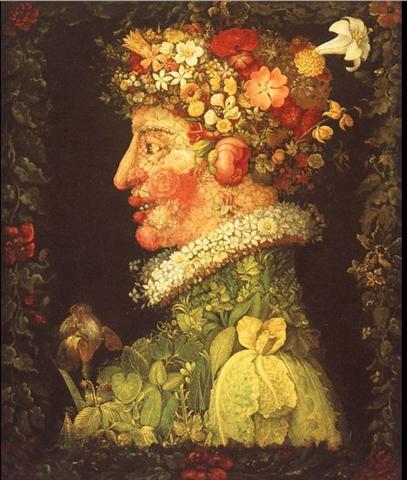
... In traditional navigational schools
on Puluwat in the Caroline Islands,
students learn how to sail outrigger
canoes. As Puluwat sailors conceptualize
a voyage between two islands, it is the
islands that move rather than the canoe:
the starting point recedes as the
destination approaches ...
.jpg)
|
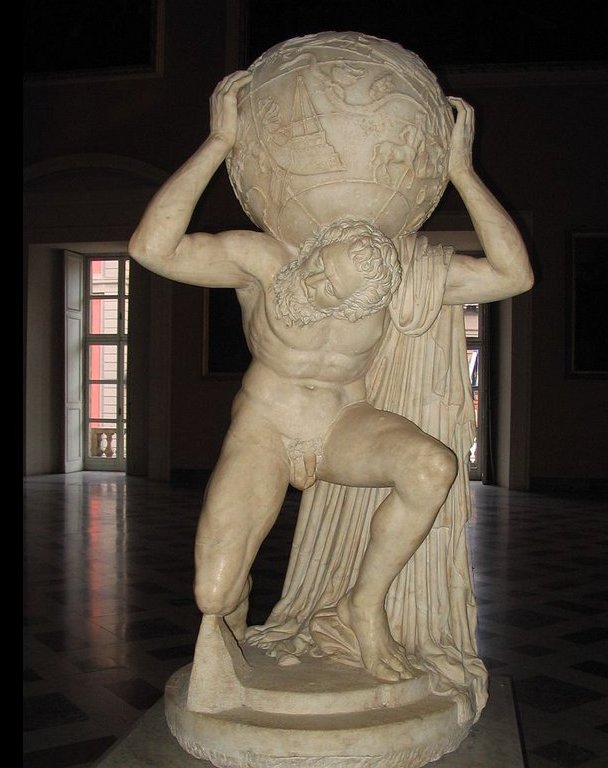
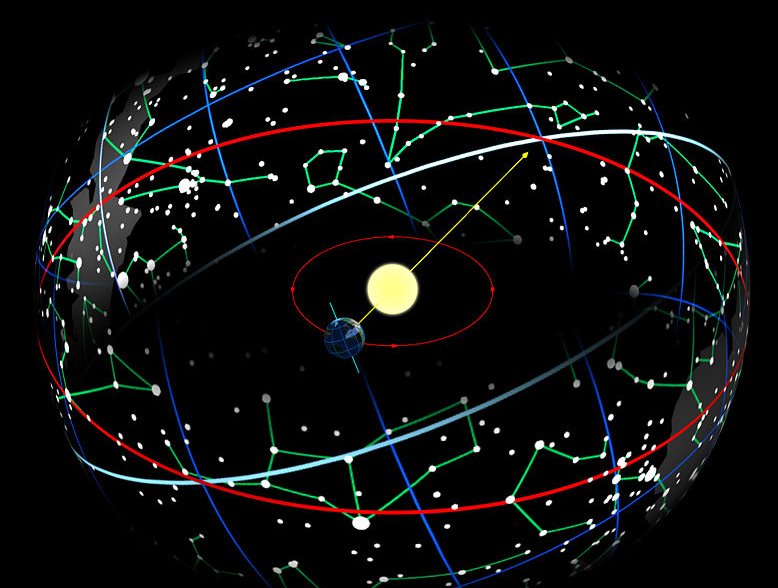

.jpg)




.jpg)


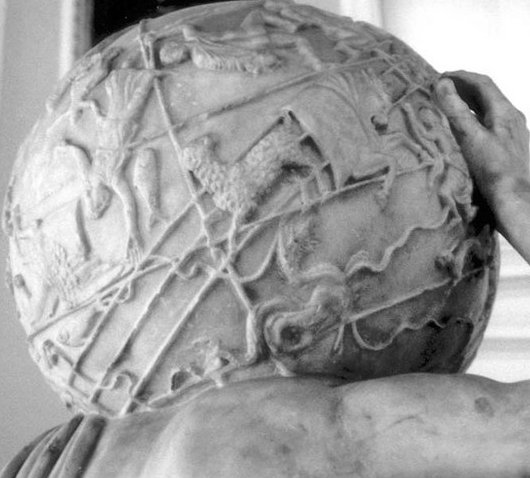















































.jpg)